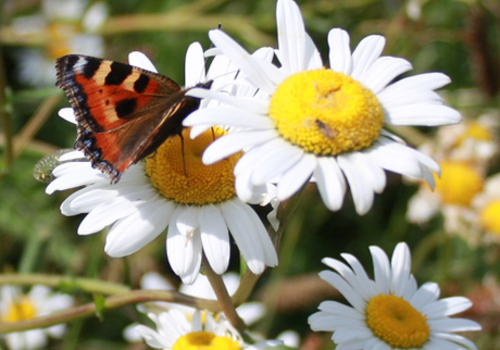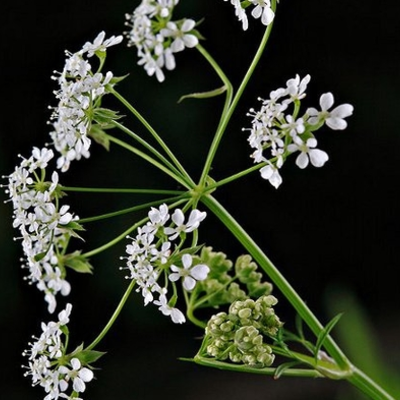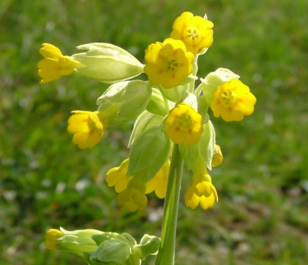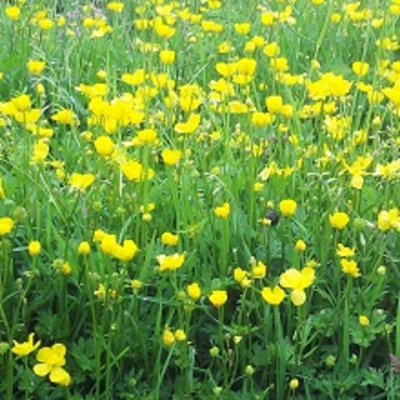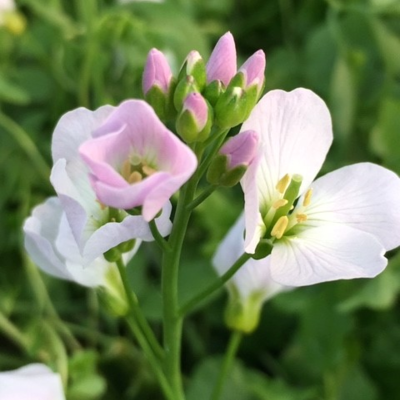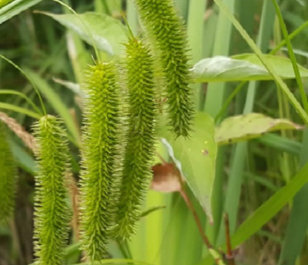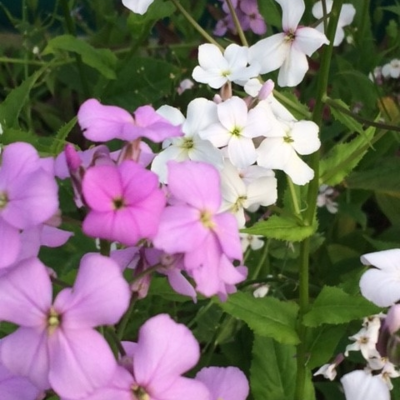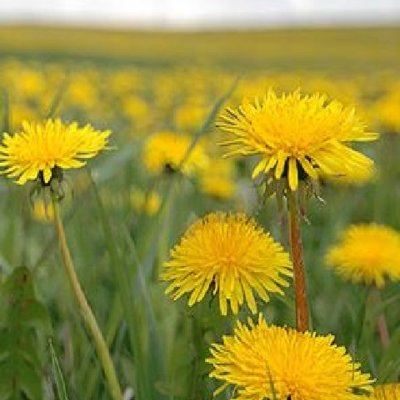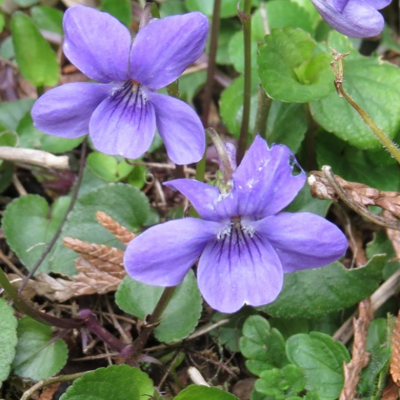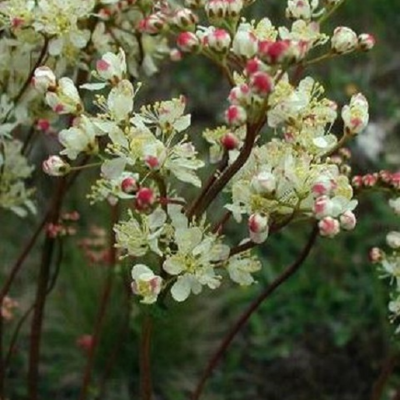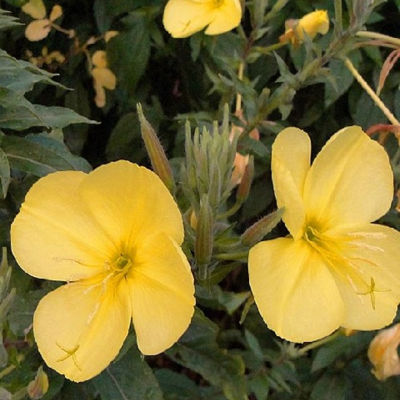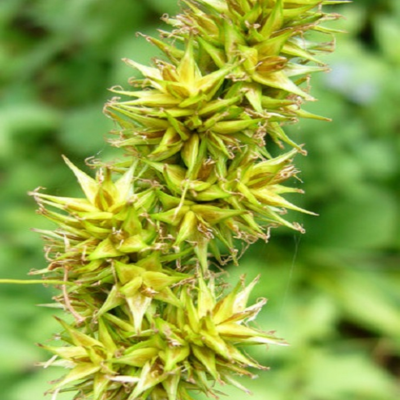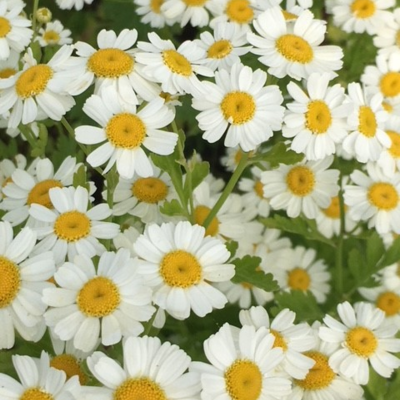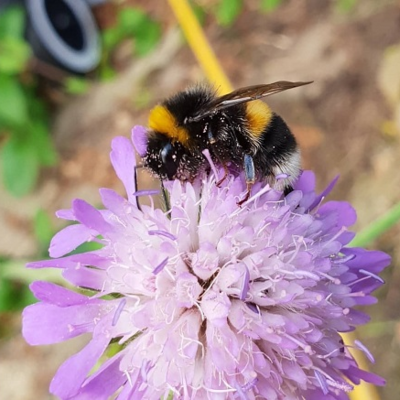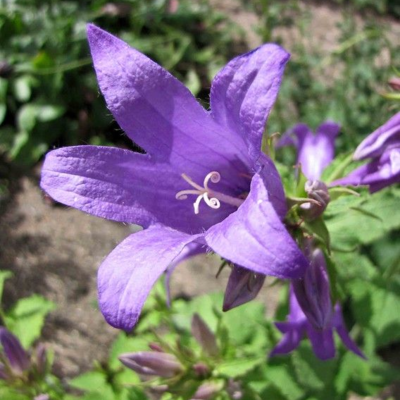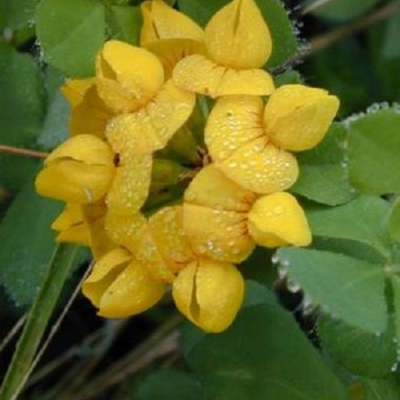Wildflower Plants A to Z
Choose from our entire range of over 100 wildflower plug plants, expertly grown in our very own nursery from high quality, UK native wildflower seed. Our wildflower plugs are ready to be planted straight out into your garden or meadow as soon as they arrive, all year round. Buying individual wildflower plants is one of the best ways to establish your chosen wildflower species, planted individually or as part of a more diverse meadow created from our range of wildflower seeds.
Don't hesitate to get in touch to speak to one of our experts or request a catalogue to view our full range. Ordering regularly or looking for large volumes? Click here to apply for a trade account today - we review all applications within one working day.
Pure-white, delicate flowers standing proud on long feathered stems commonly found in roadsides and meadows. These umbrella-like clusters grow rapidly in the warm summer months and are home to an abundant supply of bees and pollinators.
- Type: Perennial
- Height: 60-90cm
- Flowers: May-June
- Soil requirement: Neutral, well-drained
- Light requirement: Full sun to semi-shade
- Natural habitat: Grassland, meadows, hedgerows and woodlands
- Also known as: Queen Anne's Lace, Wild Chervil, Wild Beaked Parsley, Keck

Plants for Pollinators highlights plants selected by the RHS as scientifically proven to tackle the declines in bees, butterflies and other pollinators.
Cowslip plants form clusters of bell-shaped, sunny yellow flowers with distinct tubed calyxes. Known for having a sweet and strong scent compared to apricots, and it has a history in folklore, with uses in weddings and other festivities. An easy-to-grow Easter-time treat!
- Type: Perennial
- Height: 15–30cm.
- Flowers: April-May
- Soil Requirement: Moist but well-drained
- Light Requirement: Full sun or partial shade
- Natural Habitat: Meadows, woodlands, road verges
- Also known as: Fairy Cup, Key Flower, Luck Flower, Paggles
The Creeping Buttercup has classic charm, with glossy yellow, five-petalled flowers on short stems covered with fine hairs. A natural attractant for pollinators, and it adds a wonderful golden glow to lawns, paths, and spots with loamy soil.
- Type: Perennial
- Height: 20-50cm.
- Flowers: May-September
- Soil Requirement: Moist
- Light Requirement: Full sun or partial shade
- Natural Habitat: Damp grasslands, gardens, pastures
- Also known as: Lantern Leaves, Ram's Claws, Sit-Fast
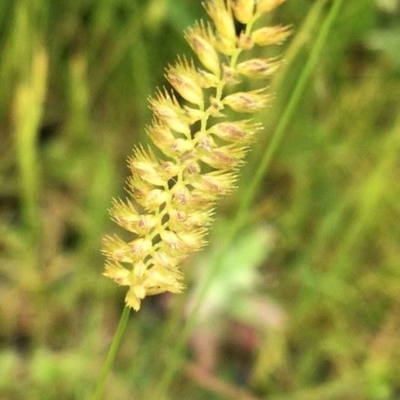

Plants for Pollinators highlights plants selected by the RHS as scientifically proven to tackle the declines in bees, butterflies and other pollinators.
Although its clustered spikelets trimmed with miniature magenta florets are now grown more as an ornamental plant, Crested Dogstail was once grown to be used to make bonnets. An important food plant for multiple species of butterflies, and works wonderfully in a wildmeadow mix, as it's exceptionally hardy- able to survive drought and cold and remain green throughout winter.
- Type: Perennial
- Height: 30–75cm.
- Flowers: May-June
- Soil Requirement: Moist but well-drained
- Light Requirement: Full sun or partial shade
- Natural Habitat: Meadows, grasslands
- Also known as: Dog's Grass, Dog's Tail Grass, Windlestraw

Plants for Pollinators highlights plants selected by the RHS as scientifically proven to tackle the declines in bees, butterflies and other pollinators.
Produces rosettes of leaves at the base of the stem leading up to its four pale pink petals. A flower that captures the essence of springtime; it's named because it blooms the same time you'd start to hear a Cuckoo's call.
- Type: Perennial
- Height: 30 – 50cm.
- Flowers: April - June
- Soil Requirement: Moist but well-drained
- Light Requirement: Full sun or partial shade
- Natural Habitat: Damp meadows, pond margins, riverbanks
- Also known as: Lady's-Smock, Cuckoo Bread, Mayflower
The Cyperus Sedge produces drooping, yellow-green tufted flowers, which are well-suited for pond margins for those who want a super lush and lively look. Hardy and tall-growing, the blade-like leaves of this sedge provide important cover for waterside wildlife.
- Type: Perennial
- Height: 60-90cm.
- Flowers: May-June
- Soil Requirement: Moist
- Light Requirement: Full sun or partial shade
- Natural Habitat: Marshes, river banks, ditches
- Also known as: Sedge Hop
With its clusters of uniquely vivid lilac petals with bursts of white, the Dames-Violet seems very different to her fellow violets, but bears the same sweet fragrance, which grows stronger in the evenings! A favourite of pollinators, and the dried petals can also be used for potpurri.
- Type: Perennial
- Height: 60-90cm
- Flowers: May-August
- Soil requirement: Moist but well-drained
- Light requirement: Full sun or partial shade
- Natural habitat: Hedgerows, wood edges, wasteground
- Also known as: Damask, Queen's Gilliflower, Sweet Rocket,

Plants for Pollinators highlights plants selected by the RHS as scientifically proven to tackle the declines in bees, butterflies and other pollinators.
This well-known wildflower provides proudly blazing bursts of golden petals in springtime landscapes! Hardy, easy-to-grow and wonderful for attracting pollinators, the dandelion's beauty is certainly something to sink your teeth into - in fact, its name originates from “lion’s tooth,” referring to their deeply serrated leaves.
- Type: Perennial
- Height: 10-45cm.
- Flowers: April-May
- Soil Requirement: Well-drained
- Light Requirement: Full sun or partial shade
- Natural Habitat: Meadows, road verges, fields
- Also known as: Bitterwort, Clock Flower, Lion’s Tooth
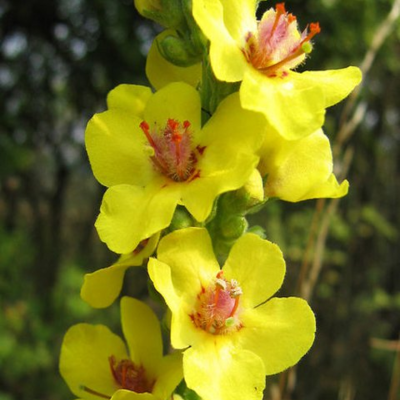

Plants for Pollinators highlights plants selected by the RHS as scientifically proven to tackle the declines in bees, butterflies and other pollinators.
This five-petalled flower's buttery yellow beauty is of a similar, cheery style to that of the daffodil, but its hairy, ruby-red anthems enriches its beauty further, giving it a strong, eye-catching effect. Alongside its fuzzy foliage, this is an ideal plant to place in a herbaceous border, for spikes of striking beauty!
- Type: Perennial
- Height: 15-45cm.
- Flowers: June-September
- Soil Requirement: Well-Drained
- Light Requirement: Full sun
- Natural Habitat: Road verges, hedgerows
- Also known as: Black-Rooted Mullein, Tall Mullein
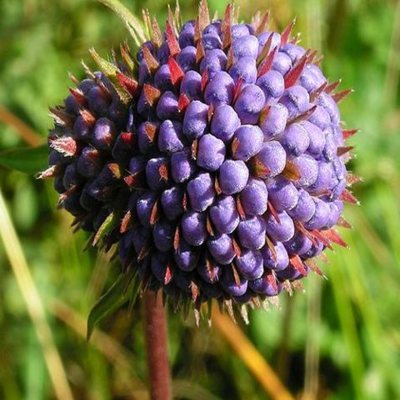

Plants for Pollinators highlights plants selected by the RHS as scientifically proven to tackle the declines in bees, butterflies and other pollinators.
Named after from its shallow roots, said to have been bitten short in folklore, the Devil’s Bit Scabious is a devilishly good addition to a loamy spot in the garden. Produces rounded, purple-blue ‘pincushion’ flower heads on upright stems. A hardy and alluring plant which attracts bees and butterflies.
- Type: Perennial
- Height: 50–80cm.
- Flowers: June-September
- Soil Requirement: Moist but well-drained
- Light Requirement: Sun or partial shade
- Natural Habitat: Bogs, woodland, heathlands
- Also known as: Blue Bonnets, Bobby Bright Buttons, Fore-Bit
This item is currently unavailable
Roses are red, and you already knew of the Violet’s namesake shade of purplish-blue. This five-petalled flower’s beauty is well known, and in sun or in shade, it’s quite easily grown. It looks magical decorating the edge of a woodland garden, or beneath a small hedge- but this plant’s so simple, it’s easy to style it; for those who want blue, it just must be the Violet!
- Type: Perennial
- Height: 5-10cm.
- Flowers: April-June
- Soil Requirement: Well-drained
- Light Requirement: Full sun to full shade
- Natural Habitat: Grassland, woodland, hedgerows
- Also known as: Wood Violet

Plants for Pollinators highlights plants selected by the RHS as scientifically proven to tackle the declines in bees, butterflies and other pollinators.
Everything about this plant appears as soft and sweet as its common nickname, ‘Meadowsweet’: from its long, wispy branches of foaming, peachy-pink and creamy white flowers, down to its strong, sweet aroma. Plant in heavier, loamy soil- perhaps pairing it with other pastel plants for a real display of eye candy!
- Type: Perennial
- Height: 60-90cm
- Flowers: May-August
- Soil Requirement: Moist but well-drained
- Light Requirement: Full sun or partial shade
- Natural Habitat: Woodland verges, roadside verges, damp meadows
- Also known as: Lady’s Belt, Little Queen, Meadowsweet
The Evening Primrose is an easy-to-grow, tall-growing plant that really screams summertime style: its bell-shaped blooms grow in striking shades of yellow, pink and white, and produce a fetching fragrance. As its name suggests, it blooms late in the day, and but seeing the Evening Primrose's floral goblets glowing in the summer sunset is surely a sight to behold.
- Type: Biennial
- Height: 100-150cm.
- Flowers: June-October
- Soil Requirement: Well-drained, sandy
- Light Requirement: Full sun or partial shade
- Natural Habitat: Roadside verges, meadows
- Also known as: Cure-All, Four O’Clock, German Rambion
Perhaps named for its spiky, orange-and-bronze tinted flower heads, there’s no mistaking the sedge’s characteristic fresh green tint and long, slender leaves. Best planted in heavy soil or slightly submerged in water to create a vibrant display at the water’s edge and benefit the wildlife.
- Type: Perennial
- Height: 60-90cm.
- Flowers: June-July
- Soil Requirement: Moist
- Light Requirement: Full sun or partial shade
- Natural Habitat: Marshes, river banks, ditches
Here’s a real treat for you: the Feverfew is a small, bushy plant which grows daisy-like flower heads. Its small-but-dense size makes it a perfect potted plant, and though it likes being under the weather in plentiful sunlight, one may try to raise it indoors to best appreciate its strong scent. Highly valued for medicinal uses.
- Type: Perennial
- Height: 15–45cm.
- Flowers: July-September
- Soil Requirement: Well-drained
- Light Requirement: Full sun
- Natural Habitat: Waste lands
- Also known as: Featherfew, Pale Maids

Plants for Pollinators highlights plants selected by the RHS as scientifically proven to tackle the declines in bees, butterflies and other pollinators.
This dainty-looking globe flower produces an intricate pattern of bluish-lilac petals: the innermost flower, a soft-looking cluster of miniature florets, is framed by long and papery outer florets! A magical addition to a meadow, especially when mixed with other light-coloured wildflowers.
- Type: Perennial
- Height: 30–90cm.
- Flowers: July-September
- Soil Requirement: Well-drained
- Light Requirement: Full sun
- Natural Habitat: Grasslands, verges
- Also known as: Black Soap, Egyptian Rose, Lady’s Cushion
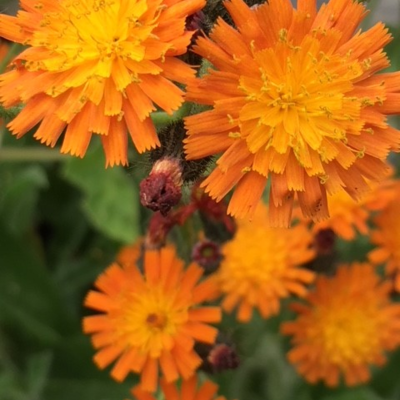

Plants for Pollinators highlights plants selected by the RHS as scientifically proven to tackle the declines in bees, butterflies and other pollinators.
Now here's a foxy flower- literally! Bearing fuzzy-looking, monarch orange flowers with brush-like edges, with stems covered in black hairs, it's easy to compare this low-maintenance wildflower to a fox leaving its den- and the clusters of new flowers which open beneath it to its shy, newborn litter of cubs!
- Type: Perennial
- Height: 15-30cm
- Flowers: June-September
- Soil requirement: Well-drained
- Light requirement: Full sun or partial shade
- Natural habitat: Meadows, embankments, road verges, stony wasteland
- Also known as: Devil's Paintbrush, Golden Mouse Ear, Grim-the-Collier
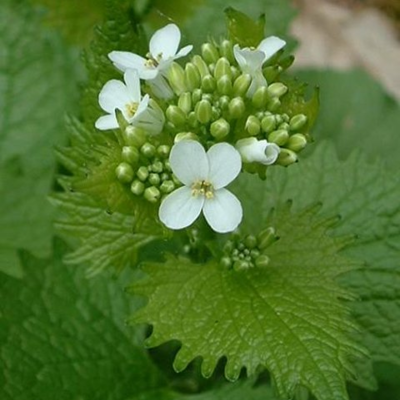

Plants for Pollinators highlights plants selected by the RHS as scientifically proven to tackle the declines in bees, butterflies and other pollinators.
Produces pearl white, four-petalled flowers and distinctly toothy heart-shaped leaves which provide the plant its name, as they smell like garlic when crushed. Its leaves are good for culinary usage, but its flowers make an excellent dressing for the garden, with their star-like petals sprinked beneath a bush creating a delectable display.
- Type: Biennial
- Height: 30-80cm.
- Flowers: April-July
- Soil Requirement: Well-Drained
- Light Requirement: Full or partial shade
- Natural Habitat: Woodlands, hedgerows
- Also known as: Jack-By-The-Hedge, Hedge Garlic
This large species of bellflower produces petals in purple and periwinkle blue. Ideal for woodland gardens and lighting up shady spots, it’s hardy and easy to naturalise!
- Type: Perennial
- Height: 90–150cm.
- Flowers: June-September
- Soil Requirement: Well-drained
- Light Requirement: Partial to full shade
- Natural Habitat: Woodlands, hedge banks
- Also known as: Brantwood, Large Campanula
This item is currently unavailable
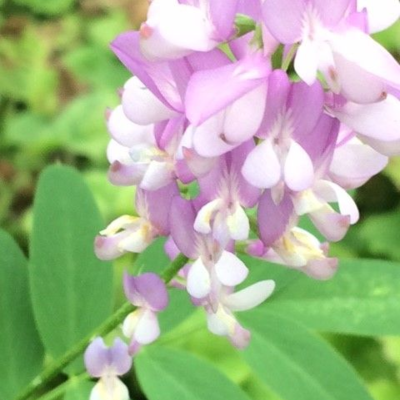

Plants for Pollinators highlights plants selected by the RHS as scientifically proven to tackle the declines in bees, butterflies and other pollinators.
Goat's Rue is a medium to tall plant with lilac-to-lavender petals in the shape of small sweetpeas. While it was previously grown readily as forage and medicinal crop, it's nowadays seen as an excellent ornamental plant that is attractive to a variety of insects as a food source.
- Type: Perennial
- Height: 100-150cm.
- Flowers: July to September
- Soil requirement: Moist but well-drained
- Light requirement: Full sun or partial shade
- Natural habitat: Damp meadows, river banks
- Also known as: French Lilac, Professor-Weed, Italian Finch
This item is currently unavailable
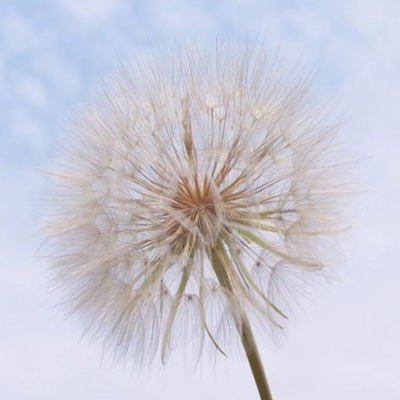

Plants for Pollinators highlights plants selected by the RHS as scientifically proven to tackle the declines in bees, butterflies and other pollinators.
Haven’t you herd? These buttery-yellow blooms framed by sharp green phyllaries have a lot in common with the famous dandelion, up to its famously fluffy, shiny sandy-silver seed heads later in the season for which they’re named. However, this hardy herb is a lot more showoffish, growing fairly tall in just about any environment. An early bloomer that closes later in the day, but when it blooms, it truly is outstanding in its field!
- Type: Perennial
- Height: 30–90cm.
- Flowers: May-July
- Soil Requirement: Moist or well-drained
- Light Requirement: Full sun or partial shade
- Natural Habitat: Grasslands, meadows, roadsides
- Also known as: Clock Flower, Johnny-Go-To-Bed-At-Noon, Salsifex
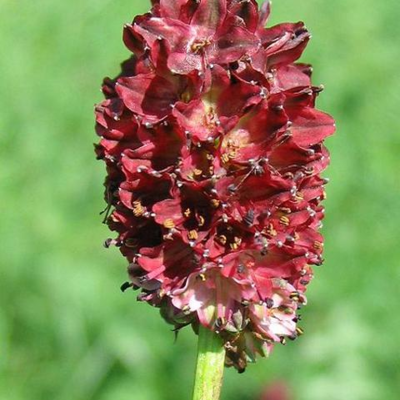

Plants for Pollinators highlights plants selected by the RHS as scientifically proven to tackle the declines in bees, butterflies and other pollinators.
The Great Burnet is a lively-looking plant, sporting crimson flower clusters atop tall, branching stems with distinct jagged leaves. They’re highly attractive to pollinators, and for a good reason; this wild-growing relative of the rose is not to be overlooked!
- Type: Perennial
- Height: 45-90cm.
- Flowers: June-September
- Soil Requirement: Moist but well-drained
- Light Requirement: Full sun or partial shade
- Natural Habitat: Floodplains, meadows, riverbanks
- Also known as: Burnet Bloodwort
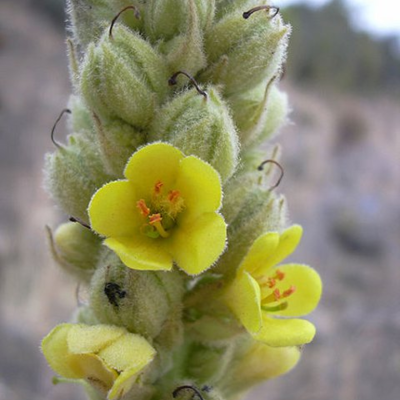

Plants for Pollinators highlights plants selected by the RHS as scientifically proven to tackle the declines in bees, butterflies and other pollinators.
The Great Mullein bears tall spires of soft, silvery leaves which spiral around the stem. In fact, this plant’s super-soft, hairy texture is just as well-known as the dense clusters of miniature pale-gold flowers it produces. Throughout history this plant’s seen a variety of uses, and in the garden it benefits bees and butterflies greatly, with some species of bees using its silvery ‘hair’ to build their homes. A friendly flower which helps the wildlife and adds a uniquely bright splash of colour to the backs of borders.
- Type: Biennial
- Height: 100-180cm.
- Flowers: July-September
- Soil Requirement: Well-drained
- Light Requirement: Full sun
- Natural Habitat: Woodland margins, clearings, waste grounds
- Also known as: Aaron’s Rod, Feltwort, Velvet Plant
This item is currently unavailable

Plants for Pollinators highlights plants selected by the RHS as scientifically proven to tackle the declines in bees, butterflies and other pollinators.
Bearing larger flowers and a taller, stouter stem, the Greater Bird’s-Foot Trefoil may is a vastly different flower to its siblings, with its glamorous, golden pea-like flowers growing in bunched whorls at the end of branches, as well as having darker foliage and a preference for damp soil.
- Type: Perennial
- Height: 30-45cm.
- Flowers: June-August
- Soil Requirement: Moist
- Light Requirement: Full sun
- Natural Habitat: Wetlands, ditches, riversides
- Also known as: Large Bird’s-Foot Trefoil
Choosing different wildflower plants by species gives you complete control over when you plant them, where you plant them and what the end result will be. And buying wildflower plug plants instead of seeds, means that you don't have to wait for them to germinate - perfect if speed is of the essence!
The full range of over 100 British wildflower plants species from Boston Seeds is available to buy online in trays of 25, 150 and 500 plug plants and all are available with nationwide delivery.
Want to learn more about the likes and dislikes of your favourite wildflower plants? Our handy wildflower species quide will tell you all you need to know - yours to download and keep for FREE.
Buy With Confidence

